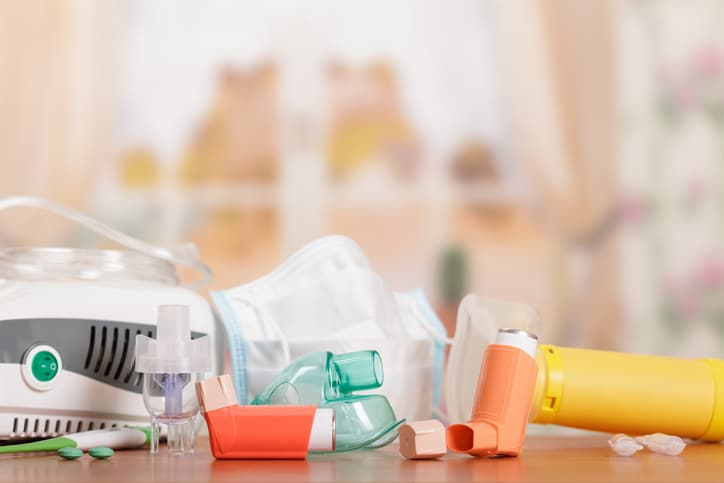Aug 15, 2022

What is COPD?
COPD is a respiratory condition where there is chronic obstruction to airflow in the lungs. Air is breathed into the lungs but a patient with COPD has trouble emptying air out of the lungs. This can also cause patients with COPD to have CO2 retention. COPD is an irreversible and progressive disease in which the lung function worsens as time goes on. Once the disease becomes symptomatic the progression may be fast and relentless depending on the treatment that the patient agrees to, and the lifestyle changes made. Once the diagnosis of COPD is given to a patient this would be coded (when documented) for the rest of the patient’s life since there is no cure for this disease at this time. There are treatments for COPD that help in progression, but they do not cure the disease. COPD is the 3rd leading cause of death in the U.S.
Emphysema and chronic bronchitis are specified types of COPD. Chronic bronchitis is when there is increased mucous and swelling production in the airway. When this occurs, the breathing tubes become smaller than normal, and it is difficult for the patient to get or take a good breath. Emphysema involves damage to the walls of the alveoli of the lung. When the walls are damaged the alveoli lose their ability to stretch and spring and the air gets trapped. Since the term COPD is unspecified and represents any form of unspecified chronic obstructive lung disease, an additional code is not needed when the diagnosis of emphysema is documented in the healthcare record. The emphysema is the specified type of COPD. Asthma is not included in the definition of COPD, but it is not uncommon for patients with COPD to also have asthma.
Symptoms of COPD:
- Shortness of breath
- Persistent coughing/chronic coughing
- Increased sputum/mucous production
- Wheezing and a tight feeling in the chest
Causes of COPD:
- Smoking (75% of people with COPD smoke or have smoked)
- Secondhand smoke
- Genetics (alpha-1 antitrypsin deficiency)
- Heavy exposure to chemicals or dust
- Indoor and outdoor pollution
Treatment for COPD:
- If you smoke…STOP
- Bronchodilators given by your physician
- Anti-inflammatory drugs (steroids) given by your physician
- Antibiotics to treat exacerbations
- Oxygen when the oxygen in the blood is low
- Lung volume reduction surgery
- Lung transplantation
- Pulmonary rehabilitation
- Support groups
To properly treat COPD and control some of the symptoms and reduce the exacerbations, the patient must be compliant with their medications. These must be taken daily or however often prescribed. Each patient is different in their needs. The medications will be needed for life.
Coding Examples:
- A patient is documented in the record to have COPD and emphysema throughout. Should both diagnoses be coded? No. Per the ICD-10-CM Alphabetic Index, only J43.9-Unspecified emphysema is reported. Remember emphysema is a specific type of COPD.
- A patient is documented in the record to have COPD and has a diagnosis of chronic bronchitis and is on long term medications to help keep the chronic bronchitis from exacerbations. In this case, only code J44.9- Chronic obstructive pulmonary disease, unspecified is reported following the ICD-10-CM Alphabetic Index.
- A patient is admitted with acute bronchitis and has a history of COPD. Does this mean that the COPD is automatically considered to be in exacerbation? No. Should both diagnoses be coded? Yes. In this case, J44.0-Chronic obstructive pulmonary disease with acute lower respiratory infection and J20.9- Acute bronchitis, unspecified would be reported. If the record further specified that the COPD was in exacerbation, then a third code would also be reported to fully describe and report the diagnoses documented – J44.1-Chronic obstructive pulmonary disease with (acute) exacerbation.
If you need help to quit smoking, please call the National Cancer Institute’s Smoking Quitline for support at 1-877-44U-QUIT.
Authored by Kim Boy, RHIT, CDIP, CCS, CCS-P
References
patch.com/massachusetts/charlestown/november-copd-awareness-month
nhlbi.nih.gov/health-topics/copd
medlineplus.gov/copd.html
thoracic.org/patients/patient-resources/resources/copd-intro.pdf
cdc.gov/copd/index.html
ICD-10-CM/PCS Coding Clinic, First Quarter 2023 Pages: 34-35
ICD-10-CM Official Guidelines for Coding and Reporting FY 2019 Page 52
ICD-9-CM Coding Clinic, July-August 1984 Page: 17 to 19
ICD-9-CM Coding Clinic, Third Quarter 1988 Page: 5 to 6
ICD-10-CM/PCS Coding Clinic, Fourth Quarter 2017 Page: 96-98
ICD-9-CM Coding Clinic, Fourth Quarter 1993 Page: 26
ICD-9-CM Coding Clinic, Second Quarter 1992 Page: 16 to 17
In need of coding support? We offer both inpatient coding support and outpatient coding support services. Partner with us to replace underperforming coding vendors, get coding backlogs caught up, staff for a FMLA/vacation gap, special projects, to assist in Single Path Coding, or for Total Outsource Coding Support.
The information contained in this coding advice is valid at the time of posting. Viewers are encouraged to research subsequent official guidance in the areas associated with the topic as they can change rapidly.
Subscribe to our Newsletter
Recent Blogs
Related blogs from Industry News , Medical Coding Tips
Coding for treatment of cerebral aneurysms ma...
With the implementation of ICD-10-CM came mor...
It is difficult for coders to know when to re...
Health Information Associates (HIA), known fo...
Subscribe
to our Newsletter
Weekly medical coding tips and coding education delivered directly to your inbox.





Leave a Comment